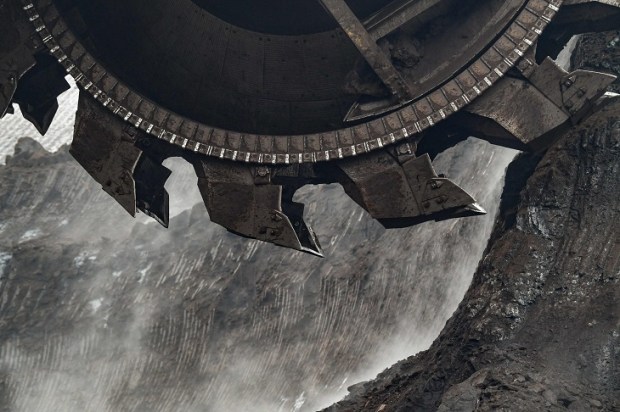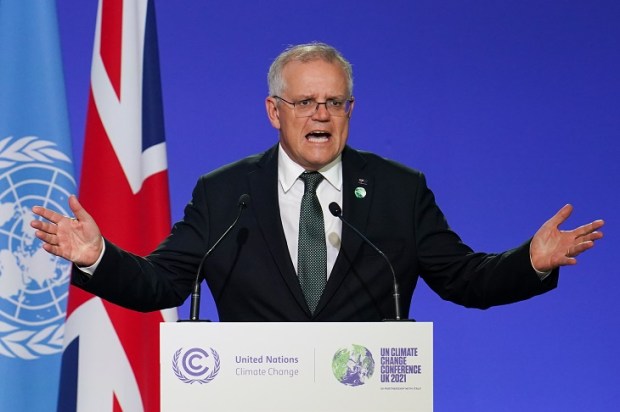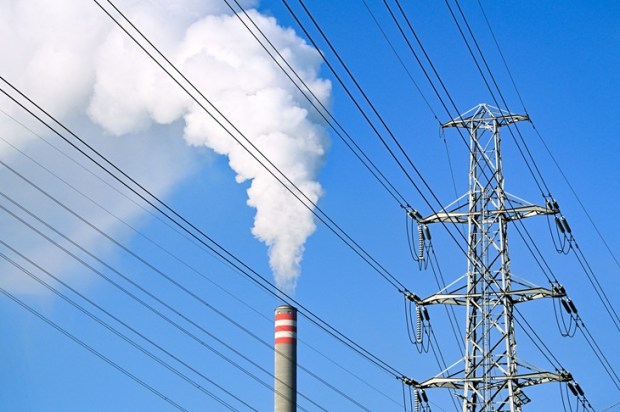Up to the year 2000, coal was responsible for over 80 per cent of Australia’s electricity generation. Its share today for the country as a whole is under 50 per cent.
In 2000, we had among the lowest electricity prices in the world. We now have among the highest.
In 2000, Australia had a smoothly-functioning electricity system. The system is now tottering, with supply interruptions and regular threats of blackouts.
Fixing our electricity system requires a completely different way of thinking about it.
Electricity demand over the next 15 years – between now and 2040 – is likely to increase by 20-25 per cent. To meet this additional demand, we need new generating capacity.
This means new coal-fired plants. There are no other options for reliable, low-cost electricity.
Natural gas is in short supply in the eastern states and, in any case, is roughly twice the cost of coal for electricity generation.
Nuclear power, if accepted in Australia, will not be in place before the mid-2030s and will play no major role before the 2040s.
Wind and solar farms are not suitable as they cannot generate reliable electricity, given that cloud cover and wind are variable.
In addition, they are inherently expensive. This is because of high transmission costs (which form roughly 40 per cent of total electricity costs) and because the development of wind and solar farms to meet the needs of the grid requires serious overbuilding.
To illustrate the point on overbuilding, to match the electricity produced by one coal-fired plant of (say) 500 megawatts requires wind and solar farms and rooftop solar panels with total capacity of at least 1,500 megawatts.
The reason? Coal-fired plants can operate 85-90 per cent of the time, about three times the average for wind and solar farms.
Such overbuilding is enormously wasteful.
Conventional thinking requires that there should be a transition in Australia from coal to renewables.
The transition should be the other way around, from renewables to coal.
The critical first step in making this transition is mounting the case for new coal-fired plants.
And a way of starting this process would be the preparation of a concept studies of new plants, one (say) in the Latrobe Valley and one (say) in the Hunter Valley. The studies would almost certainly show that coal was the most cost-effective way of meeting Australia’s immediate electricity needs.
Widespread dissemination of such studies would stimulate public discussion on the way forward for our electricity system and put pressure on Labor and Liberals to say why the coal route should not be pursued.
Who will provide the financial and organisational support for such studies and their dissemination?
To date, there has been no clear answer to this question, given that opponents of our current approach to electricity have been scattered and lacking organisation.
However, the launch in August of a new organisation, Coal Australia, raises the possibility that support is at hand.
Mobilising coal companies and others to join Coal Australia, an effort led by Nick Jorss, Executive Chairman of Bowen Coking Coal, has been an impressive achievement.
The organisation aims to promote the industry in Australia, focusing on both thermal coal (used for electricity generation) and metallurgical coal (used for steel production).
It recognises that ‘without our coal industry, Australia would not have reliable and affordable baseload electricity’.
But is it willing to take the next step and support new coal-fired plants?
A serious problem in this context is Coal Australia’s apparent support for the goal of reaching Net Zero emissions.
For example, it says on its website that it ‘strongly supports the work of Australia’s mining industry associations, such as the Minerals Council of Australia, Queensland Resources Council and NSW Minerals Council’.
But the Minerals Council says that it ‘and its members have a strong commitment to climate action, supporting the Paris Agreement and an industry ambition of Net Zero by 2050’.
This is nowhere challenged by Coal Australia.
Coal Australia also says on its website that ‘by investing in low emissions technologies, together with carbon capture and storage, the industry can contribute to meeting both our energy needs and emissions goals’.
It wants to be seen as contributing to ‘emissions goals’, whose end game is Net Zero emissions.
The Net Zero goal entails the death of the coal industry in Australia – and the death of Coal Australia itself.
In supporting Net Zero, Coal Australia is attempting to walk both sides of the street, supporting coal and supporting those trying to destroy coal.
It should change course and oppose the target of Net Zero emissions If this is a bridge too far, it should at least not take any position on emissions.
Coal Australia may consider the conclusion here to be wrong – that it can walk both sides of the street.
If so, would it consider supporting the preparation of concept studies for new plants, in the Latrobe Valley and the Hunter Valley respectively?
And would it consider moving quickly on this work, completing and starting to disseminate the concept studies by February next year?
This would allow it to play a significant role in stimulating discussion of coal in the lead-up to the next Federal election (due by May 2025), with the chance that such discussion would force political decision makers to stop pretending that coal can be ignored for electricity generation.
It would be wonderful way of supporting coal.
Finally, a little post script on the topic of Net Zero. Not only does the Net Zero goal entail the death of the coal industry, it is also a fundamentally-flawed concept.
It risks the destruction of our economy as we know it, requiring impossible levels of expenditure to achieve ($7,000-9,000 billion according to a comprehensive study released last year, chaired by Professor Robin Batterham, former Chief Scientist of Australia).
And it is a disastrous concept when applied to countries poorer than ours.
For example, electricity consumption per capita in India, Indonesia, the Philippines, Pakistan, Bangladesh, and Sri Lanka is less than 15 per cent of that in Australia.
‘In Africa, electricity is so scarce that the total electricity available per person is much less than what a single refrigerator in the rich world uses.’ (Bjorn Lomborg)
Addressing these problems overwhelmingly requires fossil fuels, notably coal and natural gas, not renewables.
‘Fossil fuels are the most important factor in explaining the advance of modern civilisation.’ (Vaclav Smil, Professor Emeritus at the University of Manitoba, Canada)
In addition to being economically threatening, the Net Zero concept is contentious on scientific grounds.
While scientists agree that emissions contribute to global warming, there is no agreement that they are the main driver of warming.
Other drivers are at work, something that is clear from warming periods in the past, most recently in the Medieval period (around 950 to 1,200 AD) and the Roman period (around 300 BC to 300 AD).
These warming periods, referred to as ‘natural cycles’, had nothing to do with emissions, which did not start increasing until about 1850.
Natural cycles are probably solar related; they (not emissions) may be the main driver of the current warming period, which started around 1800.
Michael Asten, a retired professor of geophysics at Monash university who has done considerable work in this area as part of an international team, says that ‘until mainstream climate-science opinion can be reconciled with observations of natural cycles, climate science can be considered a work-in-progress’.
Or in the words of Judith Curry, a prominent US atmospheric scientist, ‘The climate system is way more complex than just something that you can tune with a carbon-dioxide control knob’.
On political and economic grounds, the goal of Net Zero emissions should be strongly opposed.
On scientific grounds, it should also be opposed, unless future climate science reaches the firm conclusion that emissions are the main driver, not just one driver, of global warming.

























